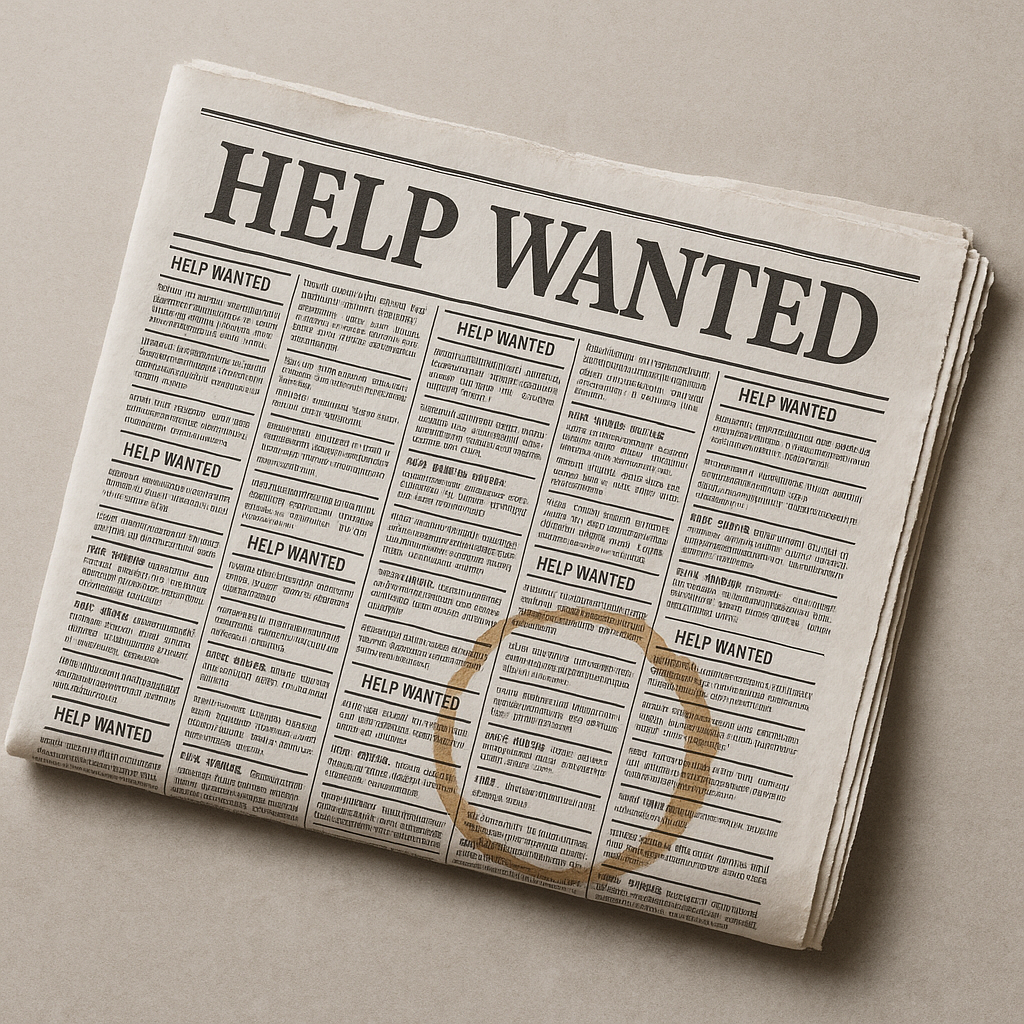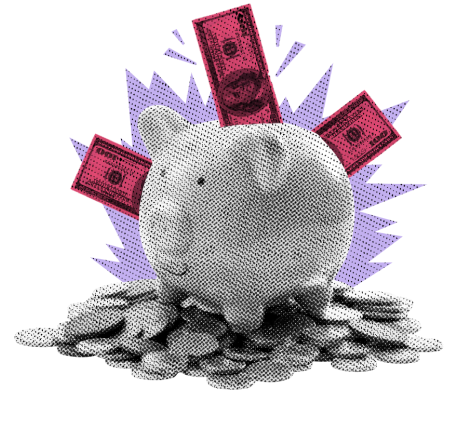
JOLTS crosses, Beige Book cools: the Fed’s dual mandate is getting shredded in real time
KEY TAKEAWAYS
-
DC is lining up candidates for the next Fed Chair as policy risks rise
-
Dual mandate tradeoff is intensifying–sticky inflation vs cooling labor
-
JOLTS fell to 7.181M while unemployed is 7.236M–0.99 jobs per seeker--the lines just crossed
-
Beige Book signals flat activity softer consumer spending, tariff-driven cost pressure, cooling hiring
-
The next move is about timing and expectations–act surgically to minimize damage
MY HOT TAKES
-
Stagflation risk is not a headline–it’s a setup when goods inflation meets labor softening
-
Tariffs are quietly functioning as a tax–raising input costs and compressing margins
-
The winning play is small timely easing once labor data confirms cooling--not a victory lap
-
JOLTS crossing below unemployed is a flashing yellow light for the Fed
-
Timing is everything–move too soon and you risk reigniting inflation, move too late and you risk breaking the labor market
-
You can quote me: “The labor situation is kind of like musical chairs–more rear-ends than seats available–and the music just stopped.”
Stale air. In case you haven’t noticed, there are a few job openings for the role of Central Bank Policy Maker, and it looks pretty clear that DC headhunters are looking for candidates for the top spot at the Fed–a role that will become vacant next spring. Imagine having a business card with your name and the title Federal Reserve Bank of The United States - Federal Open Market Committee Governor. That title should get you a complimentary drink at any Washington watering hole, an open invitation from any major news outlet… and a lifetime supply of yellow legal pads. It is a government job so the salary is not as impressive as the title. An ordinary FOMC member earns around $183k, but if you are Chair or Vice Chair, you can earn $203k.The corner office inhabitant–the Fed Chair–makes $250k.
Now, those aren’t terrible salaries. Considering that it is unlikely that those superbankers probably never work a minute over 40 hours a week, the salary seems, actually, pretty posh. The travel requirements include 8 FOMC meetings, held in Washington DC. Each meeting lasts 2 days–well, the second day only runs until 2:00 PM local time, though the Chair has to work overtime for a press conference. Those meetings come with all-you-can-eat donuts and gallons of black coffee to help them stay awake for the pageant of economists who present to the committee. Its all expenses paid travel, coach airfare and government approved hotels only–there are no 5-star locations on the list. Ok, it has its drawbacks but, all in all, it seems like a pretty good opportunity. Would you apply for one of those jobs?
Let’s look closer. If you got the job, you would only have 2 basic responsibilities. Only 2! You need to ensure price stability and full employment. That’s it! So, no, or low inflation, and low unemployment. That seems super-easy until you realize that you can’t have one without giving up on the other. Low unemployment causes inflation, and low inflation can only usually be achieved in times of high unemployment. Loving one will leave the other jilted. If you look back in time, the Fed has a long history of heavy-handed policy moves seeking to satisfy one or the other side of the dual mandate–pushing the economy into recession and then lifting it to redline, only to slam on the brakes to prevent runaway inflation.
But of course, we know that it’s not an all-or-nothing game. Fed policymakers must seek, what economists call Pareto Optimality. Pareto Efficiency is a concept in economics and game theory that describes an allocation of resources where no individual can be made better off without making at least one other individual worse off. It is very difficult to achieve Pareto Efficiency, and it is a moving target.
However, there is one thing that works in the Fed’s favor, and that is timing. Nothing happens fast in an economy. You don’t just wake up one morning and find yourself with raging inflation or mass unemployment. No. These things wane and wax over time. So if the Fed is able to anticipate changes and use a subtle hand, it may increase its chances of… well, not screwing up. But, as you can imagine, that is still a difficult objective to achieve.
Sometimes, it may not even be possible at all. Imagine a scenario where inflation is growing and so is unemployment! Those are the precursors to the much-feared stagflation, which first reared its head in the 1970s, and has not really shown up since. Looking at the current state of the economy, it would appear that we are at one of those very untenable junctures. Inflation is still sticky from the pandemic, and it has recently been trending higher. The rise may be a result of the administration’s trade policy, though it is not yet clear, but what is clear is that goods inflation is on the rise, and regardless of its reason, it presents a challenge to the Fed. Similarly, the labor market appears to be weakening. We just had 3 months of weak jobs growth. While the unemployment rate at 4.2% is not considered high by historical standards, it has risen notably over the past 2 years.
Just yesterday, we got two, what I refer to as, sleeper numbers. These are ones that typically don’t make it into the mainstream media. Those were JOLTS Job Openings and the Fed’s Beige Book. Their names probably don’t help their case, but let's put that aside and have a quick look.
JOLTS showed that there were 7.181 million job vacancies. That was lower than economists were expecting and lower than the prior month. That is a data point on its own, but it becomes more poignant when you compare it to the total number of unemployed: 7.236 million.That means that even if each job opening was filled by an unemployed worker, some would be left empty-handed. Kind of like musical chairs–more rear ends than seats available. Mathematically, there are now only 0.99 jobs for every unemployed worker. Check out the following chart, then follow me to the close.

This chart shows job openings (blue line) and total unemployed workers (white line) going back to 2021. You can see that there was a huge surplus of available jobs in the wake of the pandemic. The trends here are unmistakable however–job openings are declining and jobseekers are climbing. You can see clearly how the lines just crossed in July. Now, for context, this deficit was prevalent going from 2001(when JOLTS started to be tracked) and went into a surplus in 2018. Not surprisingly, it went back into deficit at the start of the pandemic, only to return to a surplus in 2021 (shown in my chart).
Context aside, however, the trend since the 2021 crossover shows a clear trend, and it should be alarming to the Fed. Employment is showing signs of weakening and inflation is on the rise. Let’s have a quick look at yesterday’s Beige Book. Despite its beige title, it contains anecdotal information about economic health from all the Federal Reserve Bank regions. As mentioned before, it is typically a sleeper, but yesterday it contained some important information. It showed an economy stuck in low gear, with most of the Fed districts reporting flat activity and only a handful seeing modest (a Fed favorite word) growth. Consumer spending is weakening as households feel squeezed by higher costs for essentials like insurance, utilities, and housing, while tariffs are adding a fresh layer of pressure on both businesses and consumers. Inflation is still running at a moderate (another Fed favorite word) pace, but input costs, especially tariff-driven ones (mentioned by name) are rising faster than many firms can pass through, squeezing margins and forcing some price hikes. Labor markets are cooling with employment flat to down, and firms are leaning more on attrition, automation, and wage restraint to manage uncertainty. I know that’s a lot, but it boils down to 2 things: inflation is rising, and employment is weakening.
So, if you were to be hired for the job, what would you do? Would you cut interest rates with hopes of keeping the labor market healthy and risk reigniting 2022-style inflation, or would you keep rates restrictive to fight inflation and risk having the labor market decay and cause a recession? That question along with the one where the interviewer asks you to describe your worst flaw are likely going to stump any candidate who might have the courage to apply. That complimentary drink doesn’t seem that great anymore, does it? Maybe you should take a day to think about it. Tomorrow’s monthly job report might help you decide. That release is never a sleeper and tomorrow’s, regardless of its contents, has a lot riding on it.
YESTERDAY’S MARKETS
Stocks closed mixed yesterday as a weak labor market print and a sluggish Beige Book report clouded the economic future, but managed to up bets on rate cuts. Alphabet will not be forced to sell its Chrome browser by the DOJ, and that news caused the stock to rally, propping up the broader indexes.

NEXT UP
-
ADP Employment Change (August) is expected to show 68k new job adds, lower than last month’s 104k gain.
-
Initial Jobless Claims (August 30) is expected to come in 230k, slightly higher than last week’s 229k claims.
-
ISM Services Index (August) may have climbed to 51.0 from 50.1.
-
Fed speakers today include Williams and Goolsbee.
-
Important earnings today: Ciena, UiPath, Broadcom, Samsara, Guidewire, and DocuSign.
.png)

